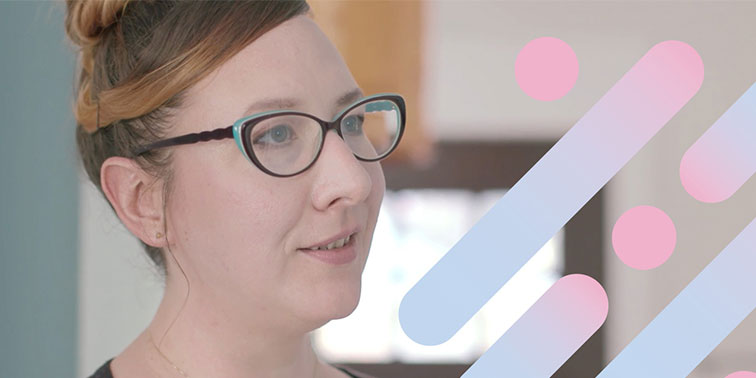Generation after generation, breast cancer left Tara’s family grieving. Her mother, three of her aunts, and her grandmother had all been diagnosed with breast cancer, and ultimately died from the disease.
With such a strong family history of breast cancer, Tara was well aware she might be a carrier of the mutated BRCA gene, which is known to be associated with a sharply increased risk.
“I was 28 years old when I decided to get tested for the BRCA gene,” Tara said. “The results came back that I was BRCA positive. I said, ‘OK what are my options?’ They said, ‘With the gene, we recommend a double mastectomy.”
With her mind reeling about the road ahead, Tara wanted to learn as much as she could about what she was facing.
BRCA1 and BRCA2 produce proteins that suppress tumors by repairing damaged DNA. When either BRCA1 or BRCA2 is mutated, causing the tumor-suppressing protein to function improperly, DNA damage may not be repaired effectively. This puts women at much higher risk of developing breast cancer than women without the mutations.1
For women with BRCA1, the risk of breast cancer increases with each passing decade starting in the 20s, with the incidence of breast cancer peaking between the ages of 41 and 50. For women with the BRCA2, risk also rises with age starting in the 20s, with the peak incidence of breast cancer between the ages of 51 and 60.2
The JAMA study also looked at the risk of developing breast cancer in the second breast. Over 20 years, the risk of a woman with a BRCA1 mutation developing breast cancer in her second breast was 41%. For BRCA2 carriers, the risk was 21%, the study found.2
In addition, the researchers found that the more relatives a woman has who have received a breast cancer diagnosis, the higher her risk will be of developing breast cancer – a statistic that weighed heavily on Tara’s heart.2
Losing sensation after mastectomy and reconstruction
With a focus on lowering her risk of cancer and avoiding what her mother, her aunts and her grandmother had gone through, Tara decided to undergo a bilateral prophylactic mastectomy. With so many decisions to make and so much to come to terms with, initially, Tara didn’t dwell on the potential for loss of sensation in her chest.
“As I was getting ready to have my mastectomy, there wasn’t a lot of thought as to whether I will completely lose sensation,” she said. “But that’s what ended up happening. I lost all sensation in my chest.”
“Losing sensation is a common side effect of mastectomy,” explained Dr. Constance Chen, a board-certified plastic surgeon in New York City. When surgeons remove breast tissue during a mastectomy, they also cut the nerves that supply feeling to the chest. “People don’t realize when a woman undergoes a mastectomy, the breasts afterward – even if they are reconstructed – can be numb, and usually are numb,” Dr. Chen said. “The reason for that is the mastectomy removes all of the tissue, including the nerves.”
Tara underwent reconstruction with breast implants, which did nothing to restore feeling in her chest.
“They can touch their breasts or someone can brush against them and they don’t even know anything is happening,” said Dr. Chen, who was not Tara’s surgeon at the time of the breast implant reconstruction.
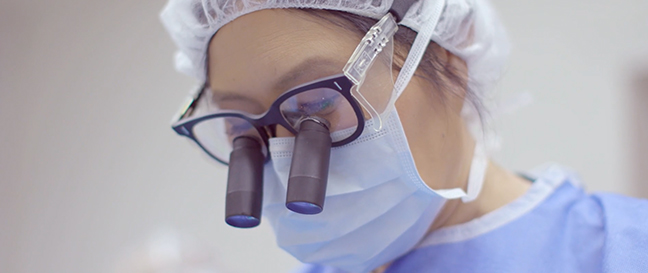
Ten years later: a second chance for sensation
Tara lived for a decade with the implants. Around the 10-year mark, Tara noticed her breasts starting to look uneven. After years of being the same size, one breast looked a bit larger than the other. To be on the safe side, she went to see Dr. Chen. Tara was surprised when an MRI showed one of her implants had ruptured. Dr. Chen recommended immediate removal of the implants followed by autologous reconstruction.
In an autologous reconstruction, also called free flap reconstruction, plastic surgeons transfer tissue (typically skin and fat) from the abdomen or elsewhere on the woman’s body, and use it to recreate a breast.
Dr. Chen also offered Tara the opportunity to restore sensation to her breasts. Using an innovative technique known as Resensation®, Dr. Chen reconnects nerves in the chest with Allograft nerve tissue. This bridges the gap between nerves and provides a scaffold to support regenerating nerve fibers, offering the opportunity to regain sensation.
Resensation is a surgical technique focused on breast neurotization or breast nerve repair.
Resensation is becoming more widely available, but it is not yet offered on a routine basis by all breast reconstructive surgeons. “I put myself in the woman’s shoes. If it were me, that is what I would want,” Dr. Chen said, explaining why she offers the cutting-edge procedure in her practice.
Because nerves regenerate slowly, it takes time for feeling to return to the breasts after Resensation. Nerves grow approximately one millimeter a day. As the nerves grew and became part of her body, Tara experienced a gradual return of sensation in her breasts over the course of several months.
“Initially it felt like slight warmth,” she said. Excited at the renewed feeling, she pinched herself to make sure it was true. When she could feel the pinch, “that was when I knew I absolutely could feel again,” she said.
If her implant hadn’t ruptured, Tara said, she may never have found Dr. Chen and undergone flap reconstruction with Resensation. “I might still have my implants, and still be walking around with an invisible shell around myself, maybe not engaging in the world as much as I would if I had more natural breasts,” Tara said.
A year later, with sensation in her breasts returned, Tara is thrilled with her decision to have flap reconstruction with Resensation. Her breasts are simply a part of her – no longer numb, and no longer a source of worries about genetic cancer risks.
“I take for granted how normal I feel now, and how little I have to worry. I’m very happy with the outcome of the surgeries and can look forward and think it’s going to be OK.”
_________________________
1https://www.cancer.gov/about-cancer/causes-prevention/genetics/brca-fact-sheet
2https://jamanetwork.com/journals/jama/fullarticle/2632503
Resensation Articles
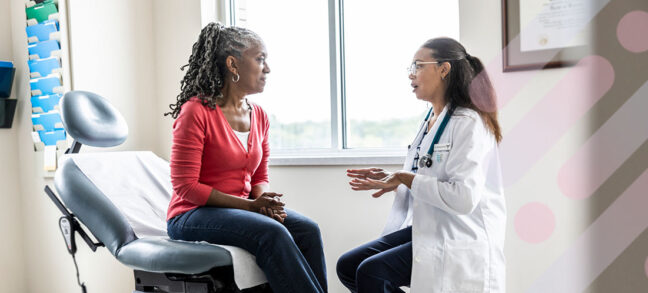
How does mastectomy impact the nerves in the breast?
One sometimes overlooked aspect of mastectomy is its impact on nerves. Read what happens to nerves during mastectomy and explore…
Read More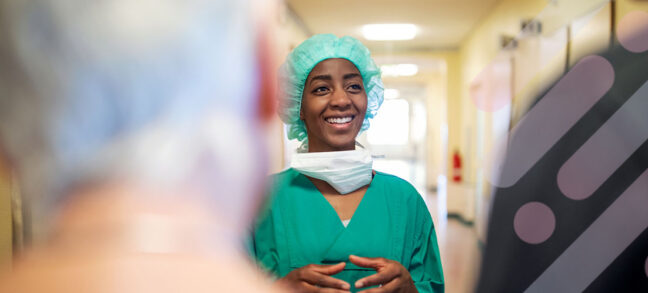
What happens during implant breast reconstruction with Resensation®?
By repairing sensory nerves, Resensation® enables you to potentially regain sensation to your chest. Read how this procedure works during…
Read More
how resensation® helped Leanna feel secure in her family’s future
With Resensation®, Leanna can be there to watch her kids grow up—without losing the feeling of being whole.
Read More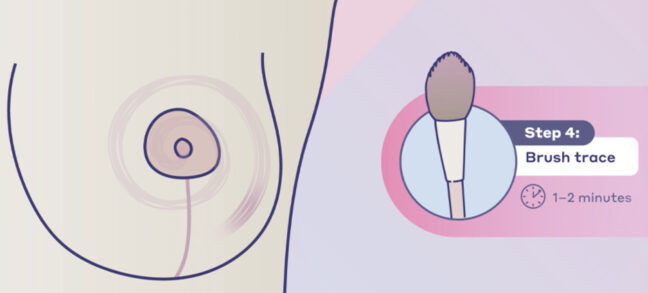
post-surgery sensory retraining: instructions and video guide
Sensory retraining is a series of exercises designed to help you reconnect with your body after breast reconstruction with Resensation®.
Read More